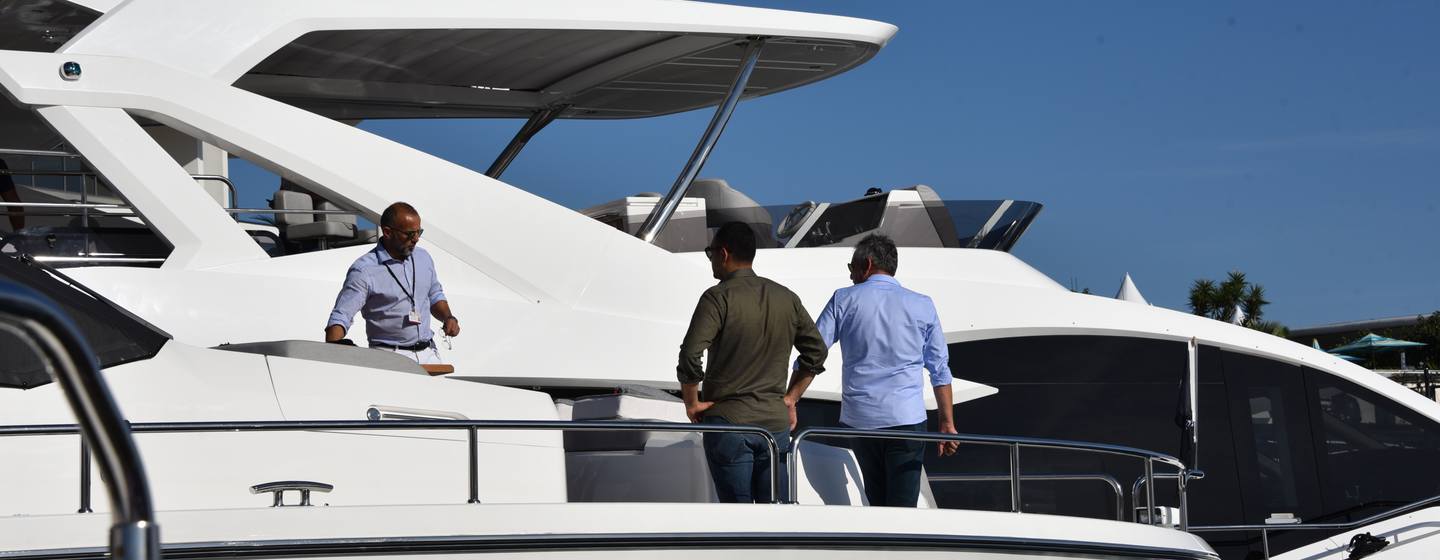Whether it’s at a show, a dealership, or at the builder's headquarters, our viewing checklist will help you to separate the bad from the good.
Viewing yachts is fun, but with so much on offer, it's easy to get distracted and forget about your needs and requirements. This is why it's important to go into a yacht viewing with some clear objectives, allowing you to focus on the key features that matter most.
Preparation
You will have specific wants and needs for your prospective yacht, depending on how and where you plan to cruise. Some things will be very personal to you and these should be noted prior to viewing. Other features, however, have more to do with good design, build, and practicality.
Most yachts will try to cater to general needs, which makes the buyer's life easier in some respects but makes it even more important to get the key features right. After all, we don’t want your yacht to be considered okay, here at YachtBuyer we want it to be perfect.
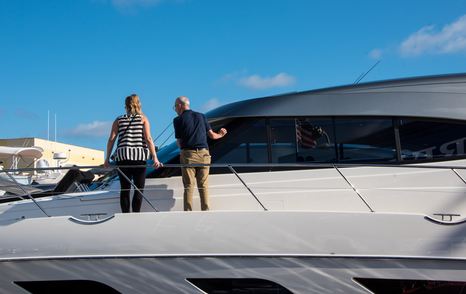
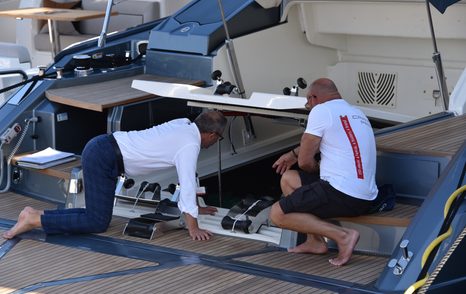
Questions To Ask Yourself Before Viewing
- How many people will be on board at any one time?
- How many people will sleep onboard at any one time?
- How often will you want to cook onboard?
- Will you be primarily day boating? If so the deck areas become more important
- Will you be staying onboard for longer periods? If so the balance between interior and exterior space is key
What To Bring And Expect
At the viewing stage, it is unlikely that you will be going to sea, so instead, this is more about checking the ergonomics and the general build quality of a yacht.
Some yachts will be in show condition, while others may be wrapped up in plastic and rather bare. Try to look past either instance and stick to the more factual and physical elements of the yacht, such as its space, quality, and practical features.
Useful viewing accessories:
- Camera/phone
- Torch
- Tape measure
- Competitor brochures for quick reference
Viewing Section By Section
Decks
Before you set foot onboard, consider how easy it is to safely access the yacht. This is usually done from the bathing platform or via a gangway (passaralle). Is there a clear, gripped area to step onto? Is there a hand-rail to grab? Or for pontoon users, is there easy side deck access?
Some yacht designs carry the topsides right aft, wrapping around the bathing platform. This can look good and offer protection but sometimes makes boarding alongside difficult.
Accessibility
How you move from one deck level to another is a key area of practicality. Can you safely and easily move from the cockpit to the side deck, or up to and about the flybridge?
Deck areas intended for transit should be gripped or teak-finished. Check for slippery gel coat areas where you are likely to step.
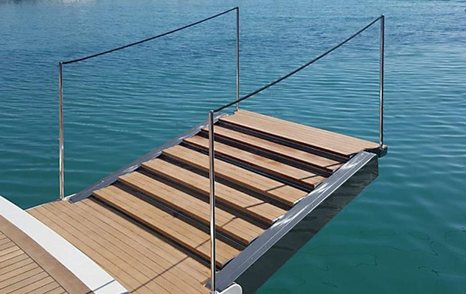
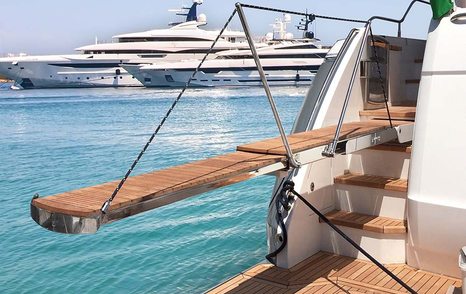
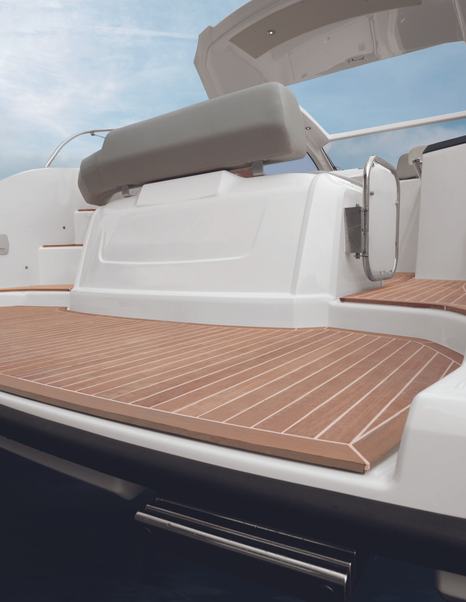
Hand Or Grab Rails
Moving around a deck at sea, with a gentle pitch and roll, requires a level of care. If the yacht is actually underway or in rougher seas it can be challenging to say the least. Intelligently placed grab rails at key transit points are therefore essential, and should be of a chunky and ergonomic design.
Check that grab rails are close to hand when moving across or onto a deck. Is there a long single rail running along the superstructure? Or are there grab rails around the helm position?
Coaming, Bulwark And Stanchion Height
The coaming is the solid raised section around a cockpit, and a bulwark is a solid raised section outboard of the side deck. Both should be of a safe height.
Many modern yachts do away with a bulwark or lower it to create a less heavy external look, replacing it with stanchion posts connected by railings or wires. A solid stainless steel top rail is preferable to a wire, creating a more robust frame. This can also be suggestive of better build quality.
A secondary mid-level rail is common, but will often be wire rather than a stainless steel tube. Although bulwarks are rare on yachts under 20m (66ft), look for a small toe rail, a raised section outboard of the deck that helps keep feet inboard.
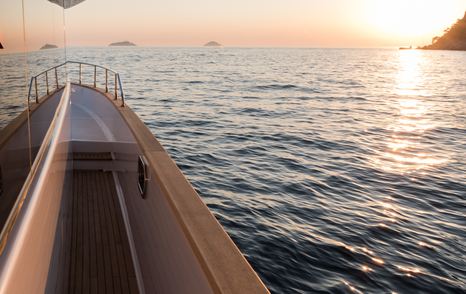

Deck Ware
Check that the cleats are of a good size and quality. Cleats secure your yacht to the shore and so they are a vital part of the inventory. Rubbing plates and fairleads are a useful addition, stopping lines from rubbing and wearing out the yacht's gelcoat or paintwork.
A 12m-15m (39ft-49ft) yacht should have bow and stern cleats with two spring cleats for drawing a yacht close to an alongside dock. Larger yachts may offer hydraulically powered winches to aid mooring, particularly stern-to. At the foredeck, the anchor should be easily stowed and secured, and not protrude too far forward.
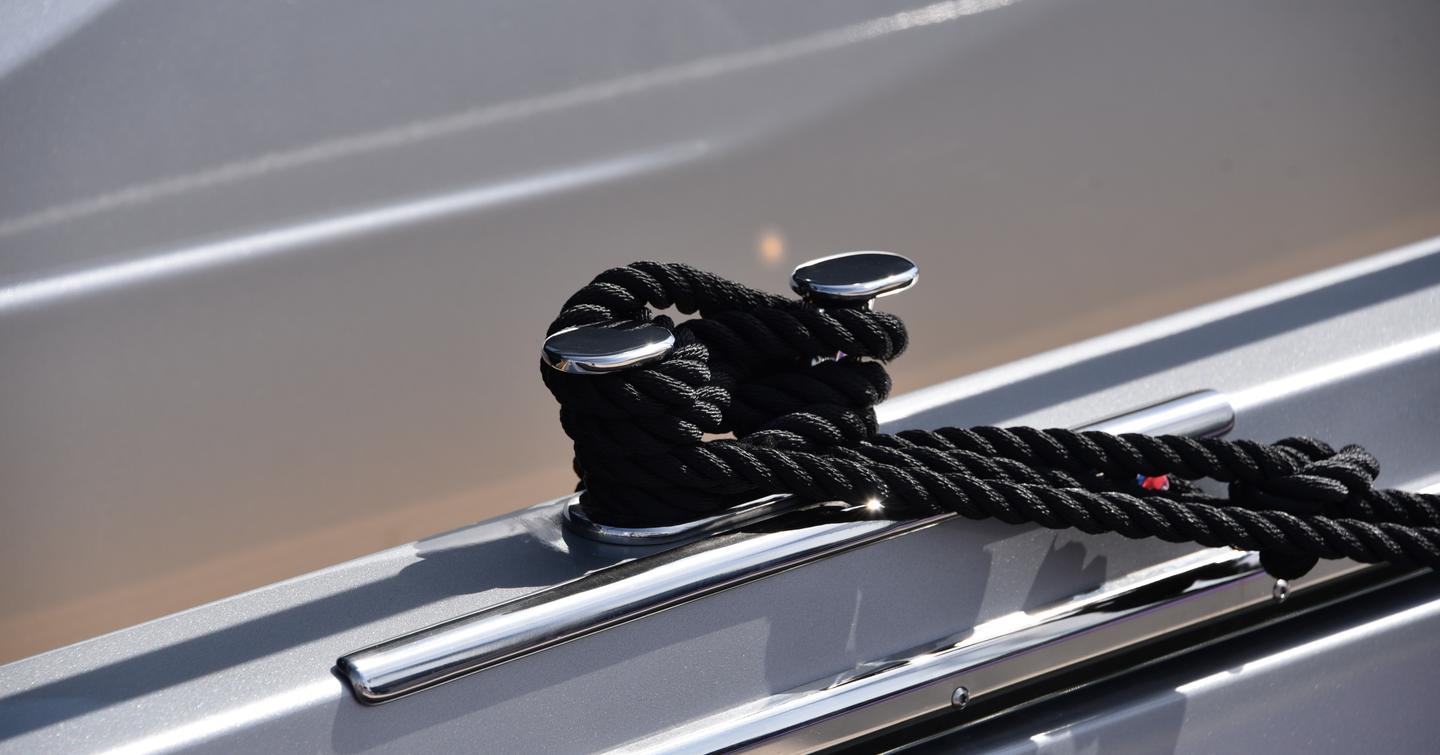
Stowage
Inside and out stowage is highly important. Having space to store items safely and securely is vital, allowing decks and transit points to be kept clean, clear, and safe.
Check that the deck stowage is lined and ideally has a rubber base. The compartments should also be self-draining.
Be wary of any deck stowage that is carpeted or does not have a drain as it will lead to dampness or mold. Having sealed compartments (with a drain) means you can securely stow items without them moving around. There may also be larger stowage areas left open in the bilge; this is fine as long as you can secure things and it is not close to any moving machinery.
Fuel And Water Fillers
Often overlooked, a clean, recessed area where you can fill your fuel and water tanks is a necessity. The recessed part of the equation is key. If the fillers are deck-mounted, spillages can run down the deck, and if poorly designed, into the yacht.
Tender Stowage
Is there a designated place to stow a tender, and its outboard motor? A tender garage or hydraulic bathing platform are common options, with larger flybridge yachts finding space up top. Check that launch and recovery systems or cranes are included, if not, how much do they cost?
Canopy System
A canopy system that encloses the aft cockpit or other deck areas is usually supplied, but how easy is it to deploy or stow? You may need to do so in a hurry, and finding space for large sections of canvas can be a hassle, especially if deck stowage is limited.
A well-designed yacht will make it easy to deploy a canopy, with compartments for it to fold up into when not needed.
Interiors
Yacht interiors play a pivotal role in defining the overall appeal and luxury of a vessel. They encompass the design, furnishings, and layout of the yacht's inner spaces. Meticulous attention to detail is key, with designers often utilizing premium materials like fine wood, luxurious fabrics, and state-of-the-art technology to create a harmonious and stylish environment.
The layout of the interiors is carefully planned to optimize space, providing areas for relaxation, dining, entertainment, and even work if needed. Furthermore, elegant cabins with en-suite bathrooms offer the utmost privacy and comfort.
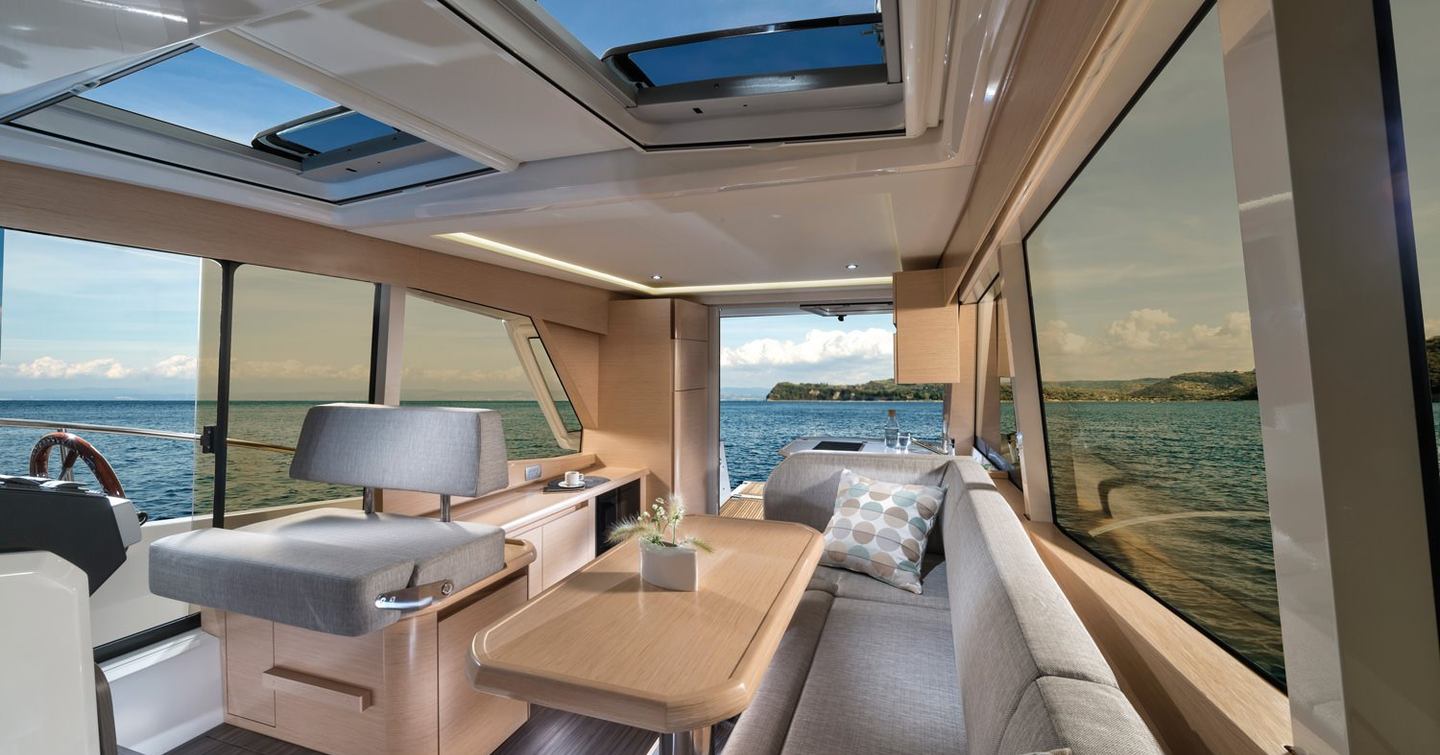
Headroom
Yacht design is so good now that 10m (33ft) models will offer full-standing headroom inside. Of course, what constitutes standing headroom will vary according to you and the yacht.
Check that there is a usable amount of headroom in the cabins so that you can dress and move around easily. On smaller vessels, this may only be in the entranceway.
Doorways are a key transit area, and these will usually offer lowered headroom so check there is still space to access without banging your head.
Practicality And Safety
It is easy to be swept up in the style of a yacht's interior, so take a moment to consider how you will walk from one area to another when underway.
Are there any rails or cabinets to grab or steady yourself against? Be wary of sharp edges that could be a hazard. The fashion for low-level furniture is good on the eye but creates very little in the way of useful handholds, so make sure the yacht builder has considered how the crew will move around.
The helm position is another key area. Is the helm seat adjustable? And, is there a space for paper charts?
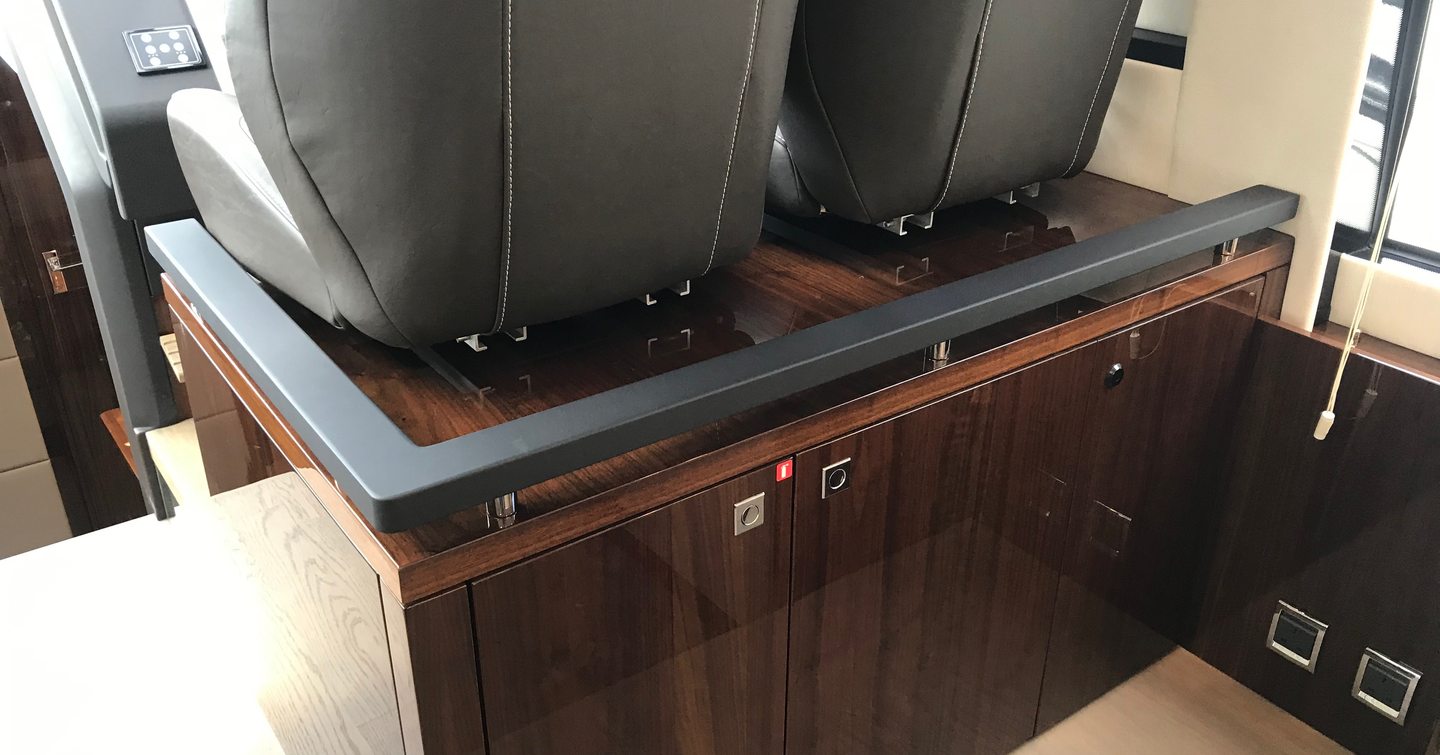
Berth Sizes
Similar to headroom, what constitutes a good berth size will vary. A double berth may not always be all that wide, and similarly, single bunk widths can be slim. Check that the berths are adequate for your needs.
The unique shapes that a cabin can take might lead to equally bespoke berth sizes, especially doubles, with hexagonal shapes that taper in at the foot.
- Typical double berth: 135cm / 150cm x 190cm
- Typical single berth: 75cm x 190cm
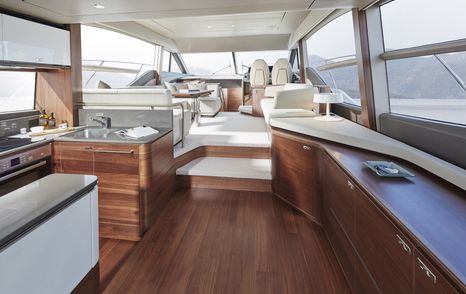
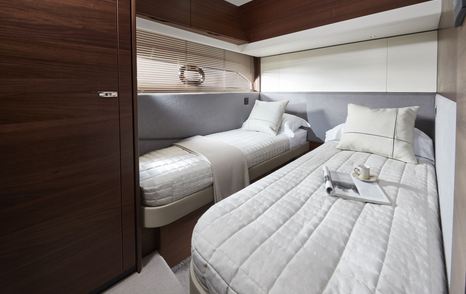
Toilet And Shower Compartments
Is there space to wash or take a shower? Don’t guess, get in the compartment and see what elbow room is available. If you are planning to stay onboard for days at a time, a useable toilet compartment is a must.
Stowage
The amount of stowage available is important, but so is how the stowage can be used. On a yacht, you need specialist areas for items, such as glassware, food, waterproof clothing, and charts. Check for compartmentalized drawers and lockers that can snugly fit equipment.
As with domestic cabinetry, soft-close, and secure fastenings are to be expected, but for yachts, the need for edges and places to put something down without it immediately rolling away is a must. Similarly, look for cupholders in key areas such as the helm and flybridge
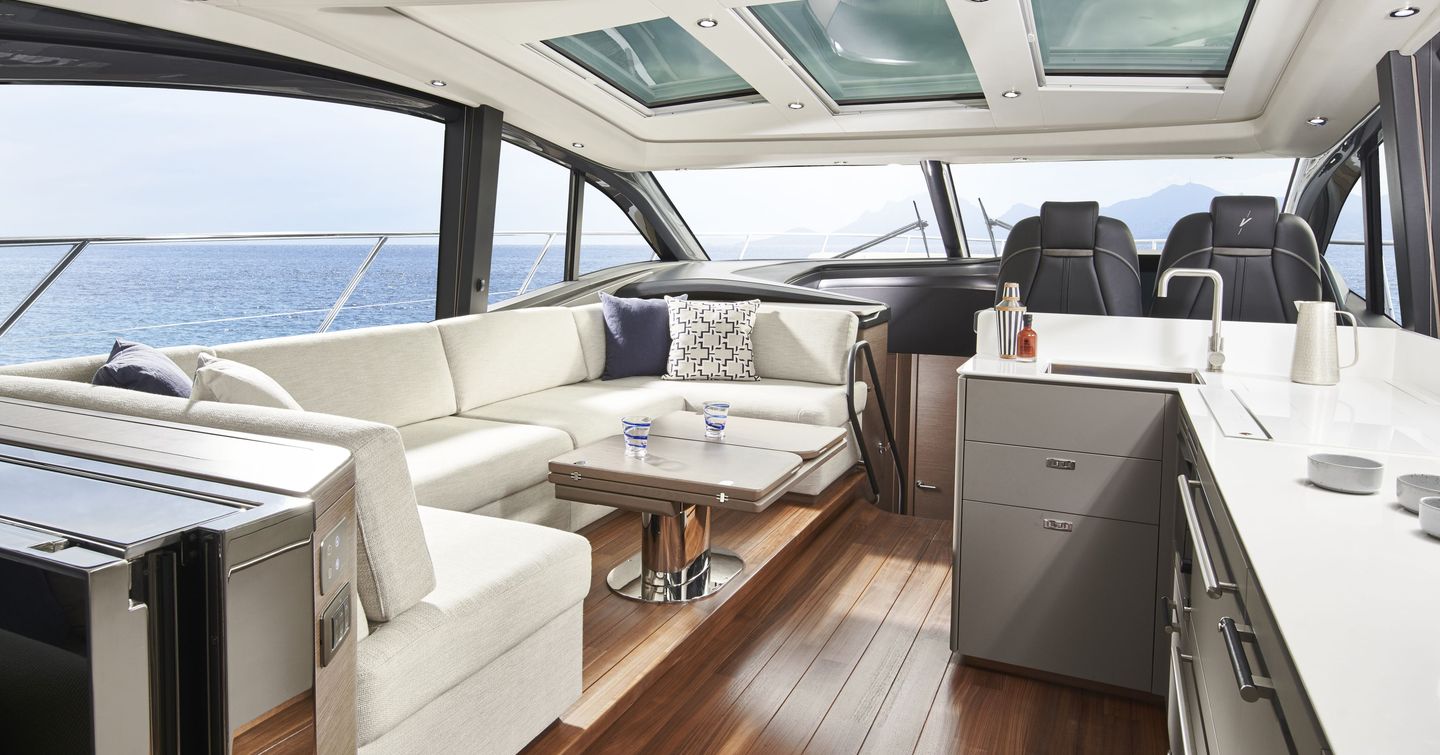
Natural Light And Ventilation
Few yacht evolutions have been as impressive or important as the use of glass. This has created an extreme sense of space and far better visibility, but a less wanted side-effect can be interiors heating up with so much sunlight coming in. Look for blinds, especially for overhead glass, and a means of natural ventilation such as portlights or sliding window sections.
From the helm, make sure you have a clear view forward. On owner-operated vessels up to approximately 20m (66ft) make sure you can look out and aft through the side windows.
Engine Room
The engine room on a yacht is an interesting place to look around. The machinery makes up a considerable amount of the purchase price, so it's good to see how they are installed and how everything works.
In this part of the vessel, you can really see the yacht's build quality. There are no pretty panels or cabinets to cover up the inner sections of the hull and topsides, so you can inspect the construction in detail.
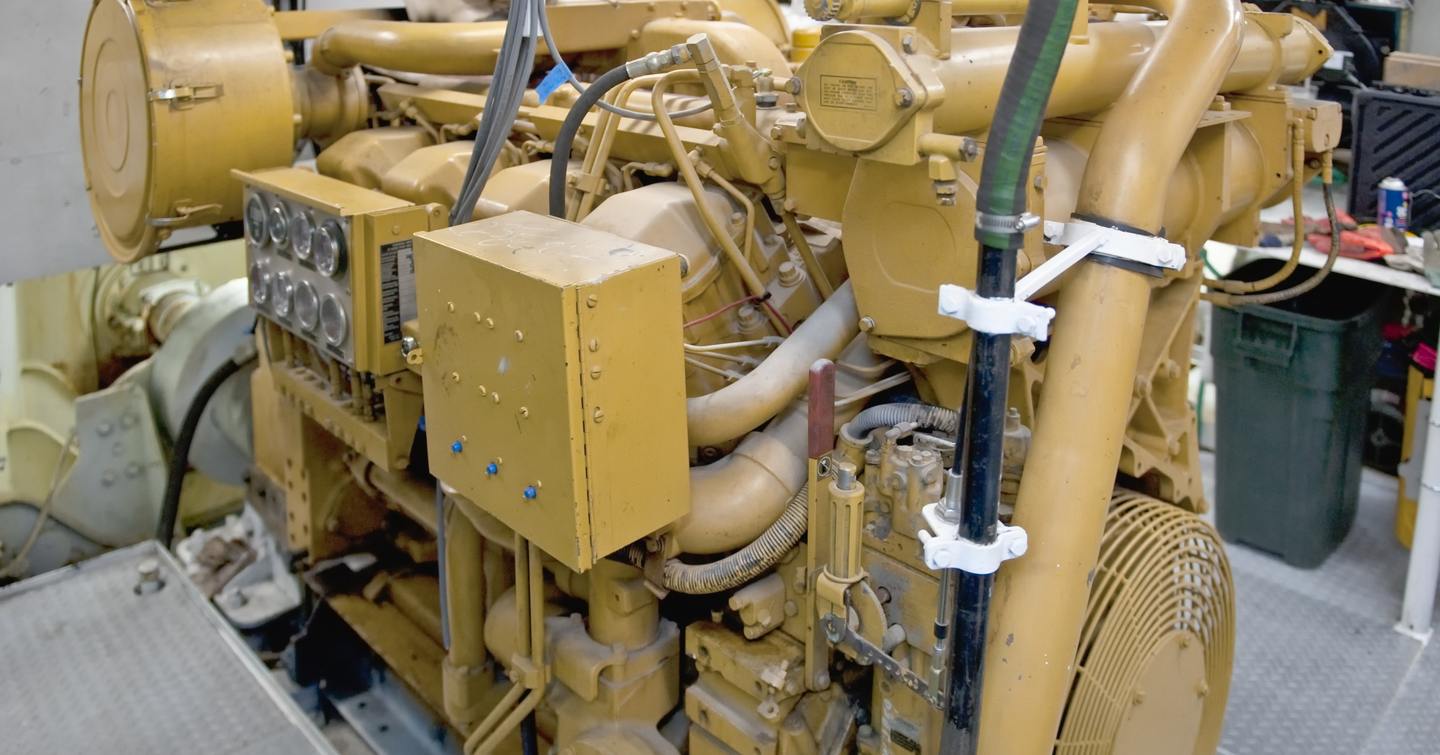
Access
Fast, easy access to the engine compartment and key service points is hugely important. There should be a well-insulated hatchway or door to the engine room, with easily negotiated steps if required.
The bilge area around the engines and service points should be covered in some way, usually by removable plates, making it easy to move around.
Service Items
Make sure the following service items and mechanisms are immediately and easily accessible. If unsure, ask the person showing you the yacht to point these items out.
- Fuel filters
- Raw water strainers/filters
- Raw water seacocks
- Batteries
- Steering gear
Finish
Look around the engine bay; is it tidy and well-finished? Check for the following signs of good engineering and general care:
- Good soundproofing and insulation
- Tidy engineering with neatly installed engines, exhausts, generators, fuel systems, and other ancillary equipment
- Neat wiring and trunking with no loose wires or cables running through raw bulkhead cutouts
- No raw or badly finished surfaces
- Good ventilation system
- Sufficient lighting
Specification
This will change from builder to builder and from yacht size to yacht size, however, make a note of the standard specifications offered to compare with other vessels later.
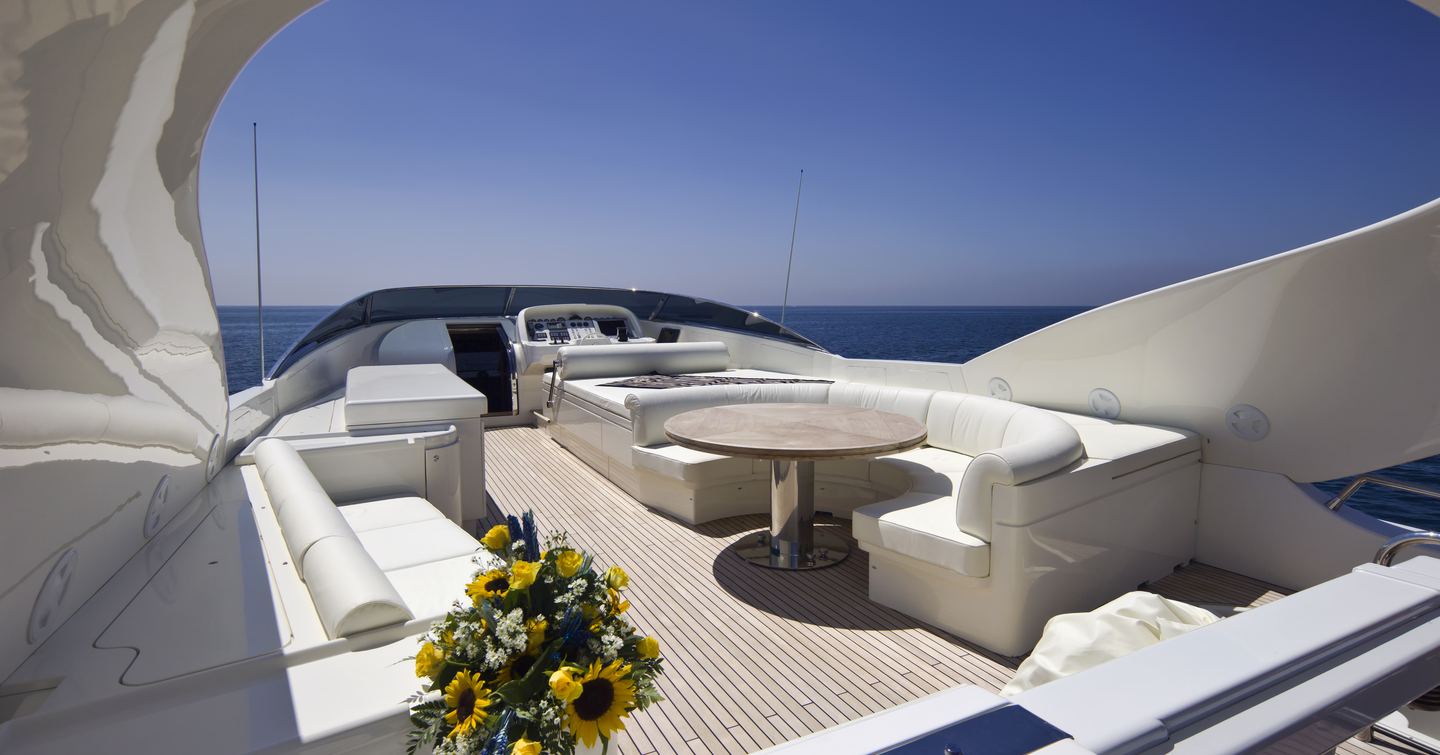
A good yacht will deliver a high level of standard equipment, unlike other alternatives which may have a low base price but will require lots of expensive extras to bring it up to a usable level.
Build Quality
The inherent build quality of a yacht is not something you can easily confirm on a single viewing, but there are a few areas of finish that might give clues to the overall quality of the yacht. Alternatively, ask the broker or dealer to point out areas that reflect the yacht's build quality. This should include areas of build and engineering as well as more aesthetic features.
Dig Beneath The Surface
Look in the bilge and up and under moldings; are they painted out and smooth? Some yachts use a GRP liner to finish the bilge, a second skin that usually incorporates gripped treads. This helps to clean up the accessible areas very well, although it does prevent access to the actual hull should remedial work be required.
Feel under seat moldings and furniture also; are there rough finishes? A well-built boat is not only finished properly where you can see it, but also where you can't.

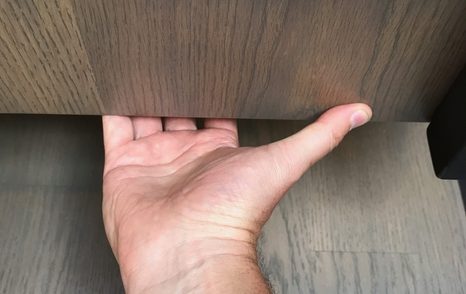
Teak Decking
The majority of natural teak decking is ply, with a veneer of teak on the outer edge. Ask how many millimeters is actual teak. 2mm-3mm will wear down quickly in areas of high traffic, such as flybridge steps. 5mm-6mm will be far more durable.
Stainless Steel
Used for deck guardrails, masts, cleats, rubbing strips, and various other deckware, Marine Grade 316 stainless steel is the only reliable metal to withstand the rigors of saltwater. How much stainless steel is fitted and is it of a sturdy gauge (diameter)?
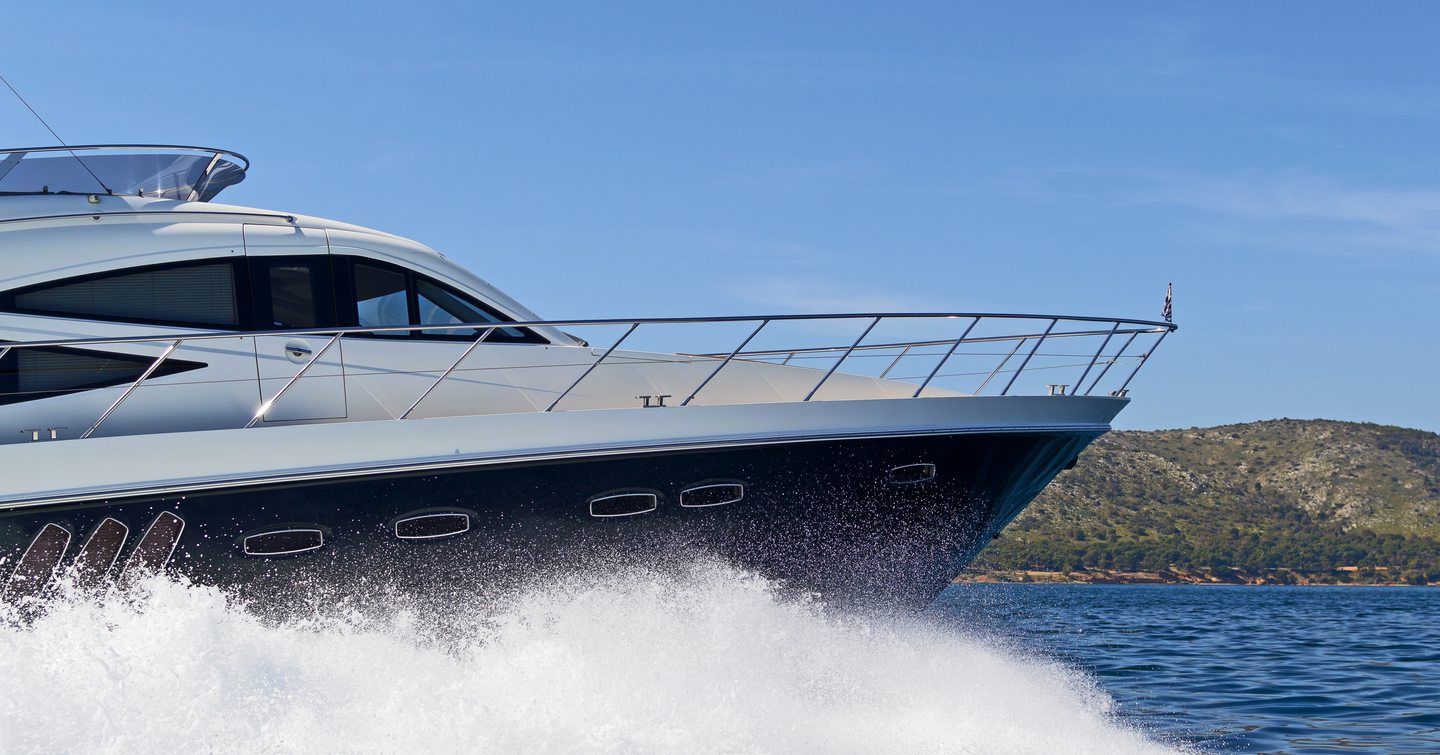
Lockers And Doors
A lined stowage locker that opens with a gas-strut lid is a sign of a good finish and build quality. Every loose-fitting lid or door will add to the noise levels onboard so snugly fitting items will create a more refined experience.
All doors should fit and close securely, ideally with anti-rattle seals. Vibrating doors can add to the noise levels onboard when underway. Additionally, check that the door handles and hinges are of good quality.
General Engineering
In the great scheme of things, the cost of engineering items found in the bilge or engine bay is minimal when compared to the overall cost of the yacht, so look for well-made items that seem over-engineered, rather than under-engineered. The easiest way to do this is to compare various competing models.
Summary
In conclusion, a comprehensive yacht viewing checklist is an invaluable tool for anyone considering purchasing a yacht. By following the steps outlined in this checklist, you can ensure that your yacht viewing experience is not only enjoyable but also highly informative.
From assessing the vessel's condition to evaluating its amenities and verifying its compliance with safety regulations, a thorough inspection is key to making a well-informed decision. Keep in mind that a yacht is a significant investment, and a meticulous viewing process will help you find the perfect vessel that aligns with your desires and expectations.
Happy hunting, YachtBuyer!
